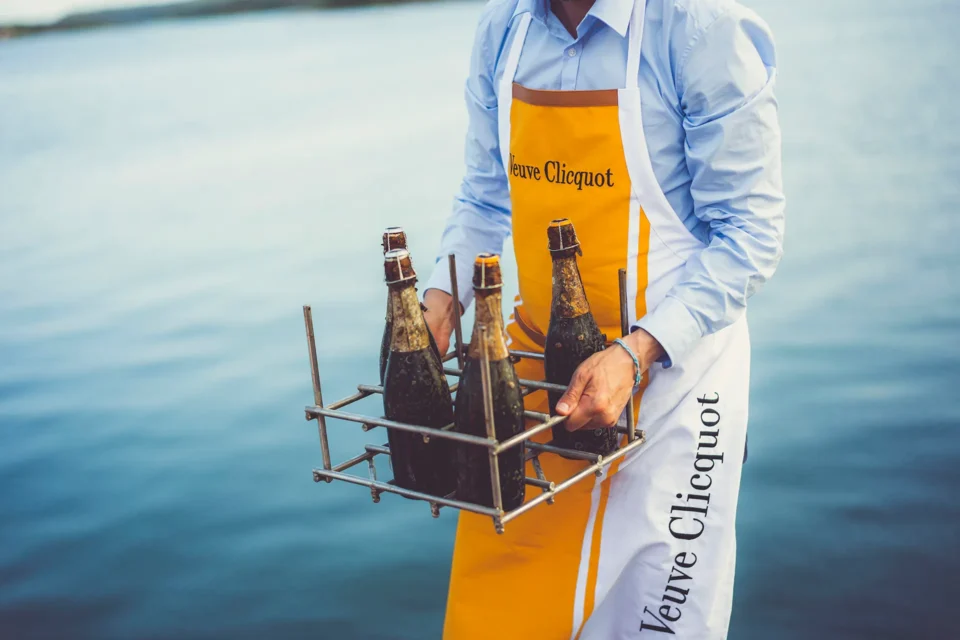In the continuous quest to innovate and enhance the quality of wine, vintners are turning to the depths of the sea, exploring the unique effects of underwater aging. This relatively new practice, where bottles or barrels of wine are submerged in marine environments, introduces a novel dimension to wine maturation. This blog post dives into the intriguing world of sea-aged wines, examining the impact of underwater cellars on the character and complexity of the wine.
The science behind sea aging
Constant temperature and pressure: one of the key factors contributing to the unique properties of sea-aged wines is the stable, cold temperature and high pressure of deep marine environments. These conditions are remarkably consistent, offering an ideal setting for wine aging. The constant temperature helps maintain the wine’s integrity, while the pressure can influence the molecular composition of the wine, potentially enhancing its texture and mouthfeel.
Lack of light and reduced oxygen: underwater cellars are devoid of light, eliminating the risk of uv radiation affecting the wine. Additionally, the minimal oxygen exposure due to the seal of the bottle and the pressure of the water can slow oxidation rates, preserving the wine’s youthful flavors and potentially leading to a different aging trajectory compared to traditional cellar aging.
The taste profile of sea-aged wines
Enhanced complexity and smoothness: anecdotal evidence from vintners who have experimented with sea aging reports that wines tend to develop enhanced complexity and a smoother finish. The unique conditions of the sea are thought to accelerate certain aging processes, resulting in wines that are more rounded and integrated at an earlier age.
Distinctive saline notes: some sommeliers and wine enthusiasts claim that sea-aged wines acquire a subtle saline character, which is believed to complement the wine’s natural flavor profile. This distinct nuance is not just a result of the marine environment but could also be attributed to the slight micro-oxygenation that occurs through the cork, enriched by the ocean’s minerality.
Challenges and considerations
Logistical and environmental concerns: the practice of sea aging presents logistical challenges, including the retrieval of bottles and ensuring their cleanliness and integrity once brought ashore. Environmental concerns also arise, emphasizing the need for responsible practices that do not disturb marine ecosystems or contribute to pollution.
Cost and accessibility: sea aging is a labor-intensive and costly endeavor, impacting the final price of these wines. The process’s novelty and the unique taste profile it imparts make sea-aged wines highly sought after by collectors and enthusiasts, though their availability may be limited due to the small-scale nature of most underwater aging projects.
Case studies: success stories of underwater cellars
Champagne aging in the baltic sea: one notable example is the discovery of shipwrecked champagne bottles aged over a century in the baltic sea. The remarkably preserved champagne sparked interest in underwater aging, with its complex flavors and preserved effervescence serving as a testament to the potential of marine cellars.
Experimental projects in the mediterranean: various wineries around the mediterranean have embarked on experimental sea-aging projects, reporting positive outcomes in terms of the wine’s development and unique taste characteristics. These projects often collaborate with marine biologists and environmental experts to ensure that the underwater cellars are sustainable and do not harm the aquatic environment.
Conclusion
The exploration of sea aging opens up new frontiers in winemaking, offering a unique approach to enhancing wine’s complexity and character. While the practice is still in its experimental phase, the preliminary results have captivated the wine community, promising a fascinating addition to the world of fine wines. As more vintners venture into the depths, the future of sea-aged wines looks as vast and mysterious as the oceans themselves, promising discoveries that could further enrich our understanding and appreciation of wine.

